|
|
|
Introduction |
Secluded Place |
Scrape | Mound | Burrow | Cavity | Plate |
Platform |
Pendant | Sphere |
Cup | Host | |
Simple Scrapes
Many of
the ducks, most shorebirds, plus most terns, and some falcons,
pheasants, quail, and partridges of North America, use simple
scrapes on the ground as their nests.
|
|
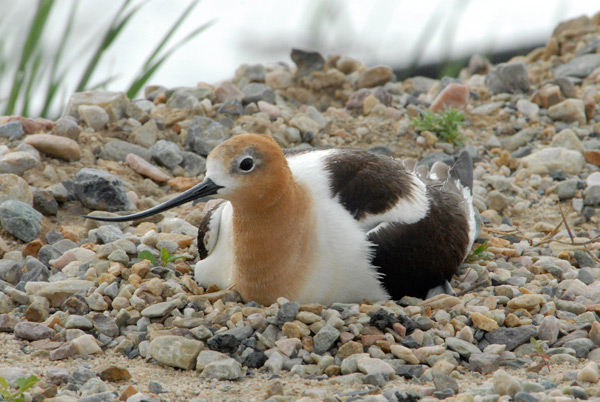 American
Avocets make a slight hollow near shallow lakes and ponds as
their nest. American
Avocets make a slight hollow near shallow lakes and ponds as
their nest. |
Female on a Nest, by Mike Fish
©Mike Fish
|
|
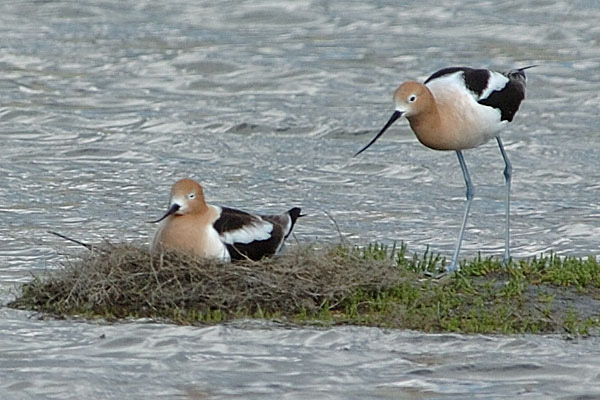
If the water level rises they will build up the nest with sticks,
weeds and other materials to raise the eggs above the water. |
Female on a Nest, Male looking on, by Mike Ware ©Mike Ware
|
|
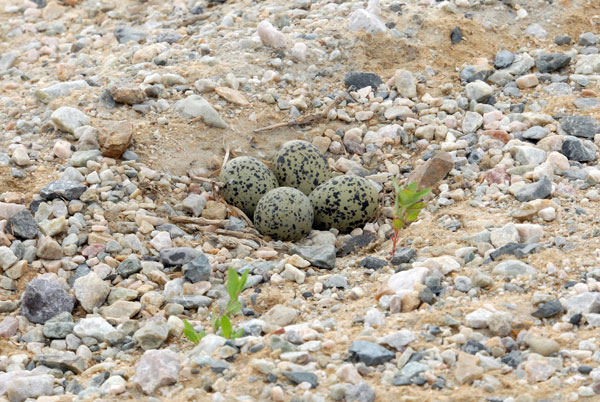 Usually
four, but sometimes three eggs are laid which are incubated by
both parents for about 24 days. Usually
four, but sometimes three eggs are laid which are incubated by
both parents for about 24 days. |
Eggs in a Nest, by Mike Fish
©Mike Fish
|
|
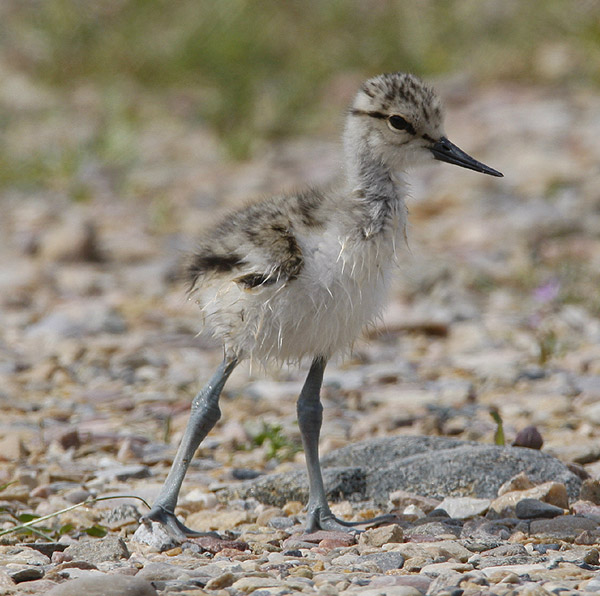 The
precocial young can swim a few hours after hatching, but can't
fly for about 27 days. The
precocial young can swim a few hours after hatching, but can't
fly for about 27 days. |
New Chick, by Jack Binch
©Jack Binch
|
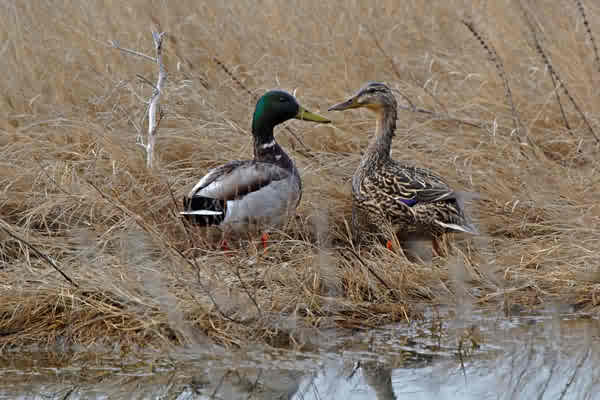 Mallards,
like most ducks, nest on the ground in a shallow scrape lined with
grasses and other soft materials. But sometimes Mallards can
build a variety of more bulky types of nests quite far away from
the water, which they line with vegetative material and down. Mallards,
like most ducks, nest on the ground in a shallow scrape lined with
grasses and other soft materials. But sometimes Mallards can
build a variety of more bulky types of nests quite far away from
the water, which they line with vegetative material and down.
|
Male and Female, by Brad Sharp
©Brad Sharp
|
|
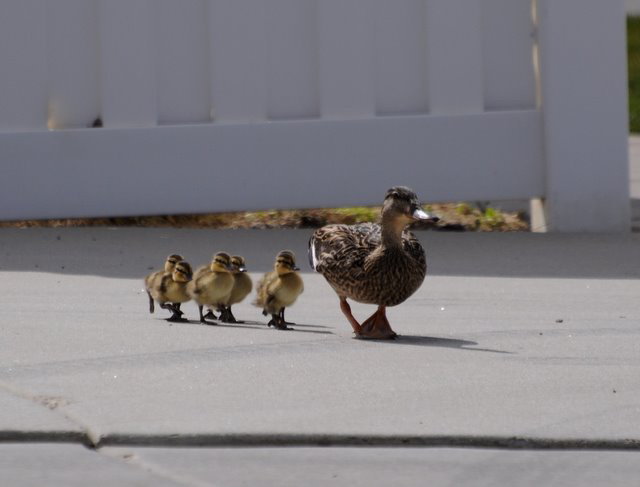
A large clutch of from 8 to 10 eggs is
incubated by the female for 26 to 30 day. Soon after
hatching the chicks are led to the nearest water.
In a city environment, nests far
from the water can cause some problems for the chicks being lead by the
female, when they must navigate some barriers to reach the water. (series
of photos) The young
birds can fly about 49 to 60 days after hatching. |
March to the "Sea", by Jeff Cooper
©Jeff Cooper
|
|
|